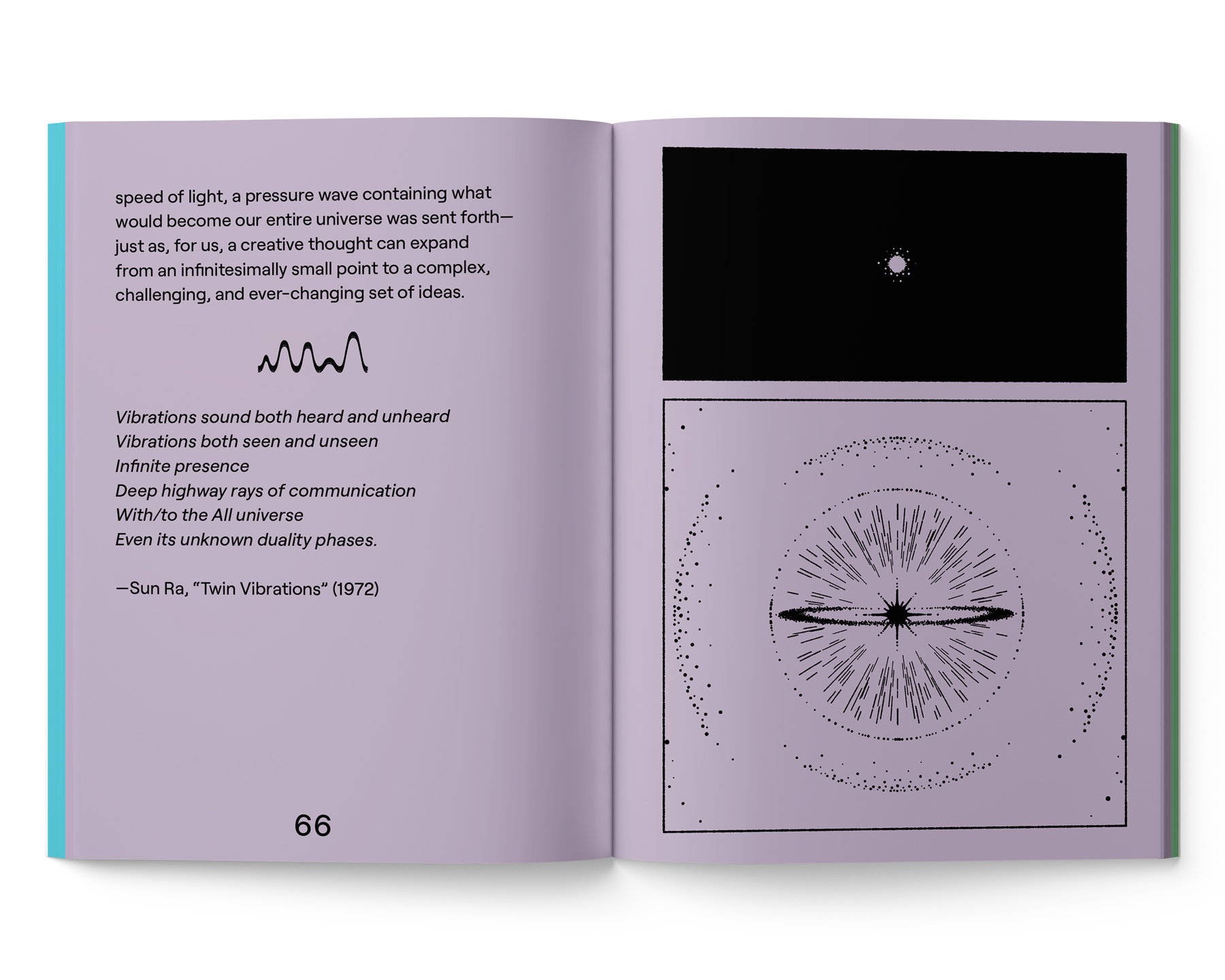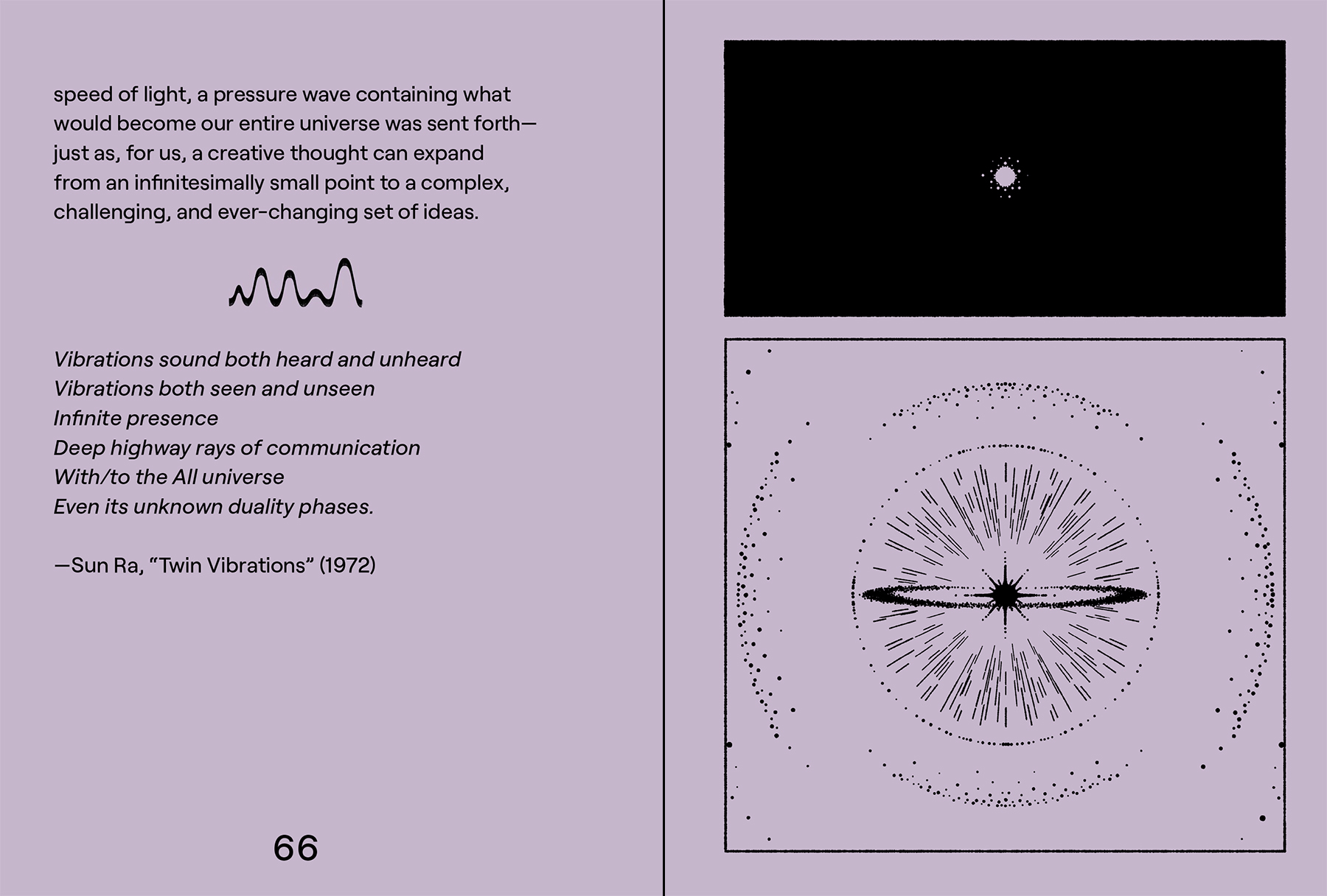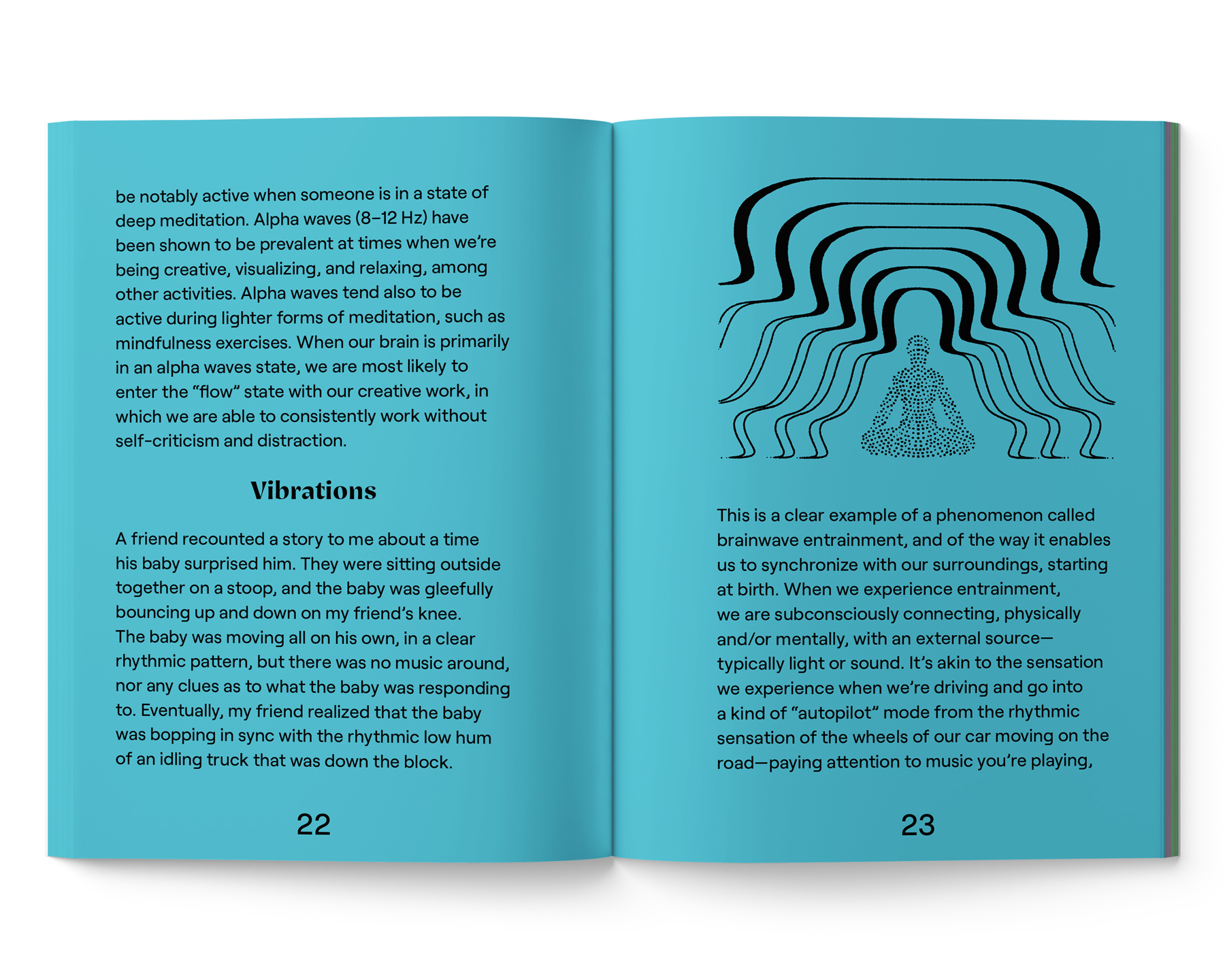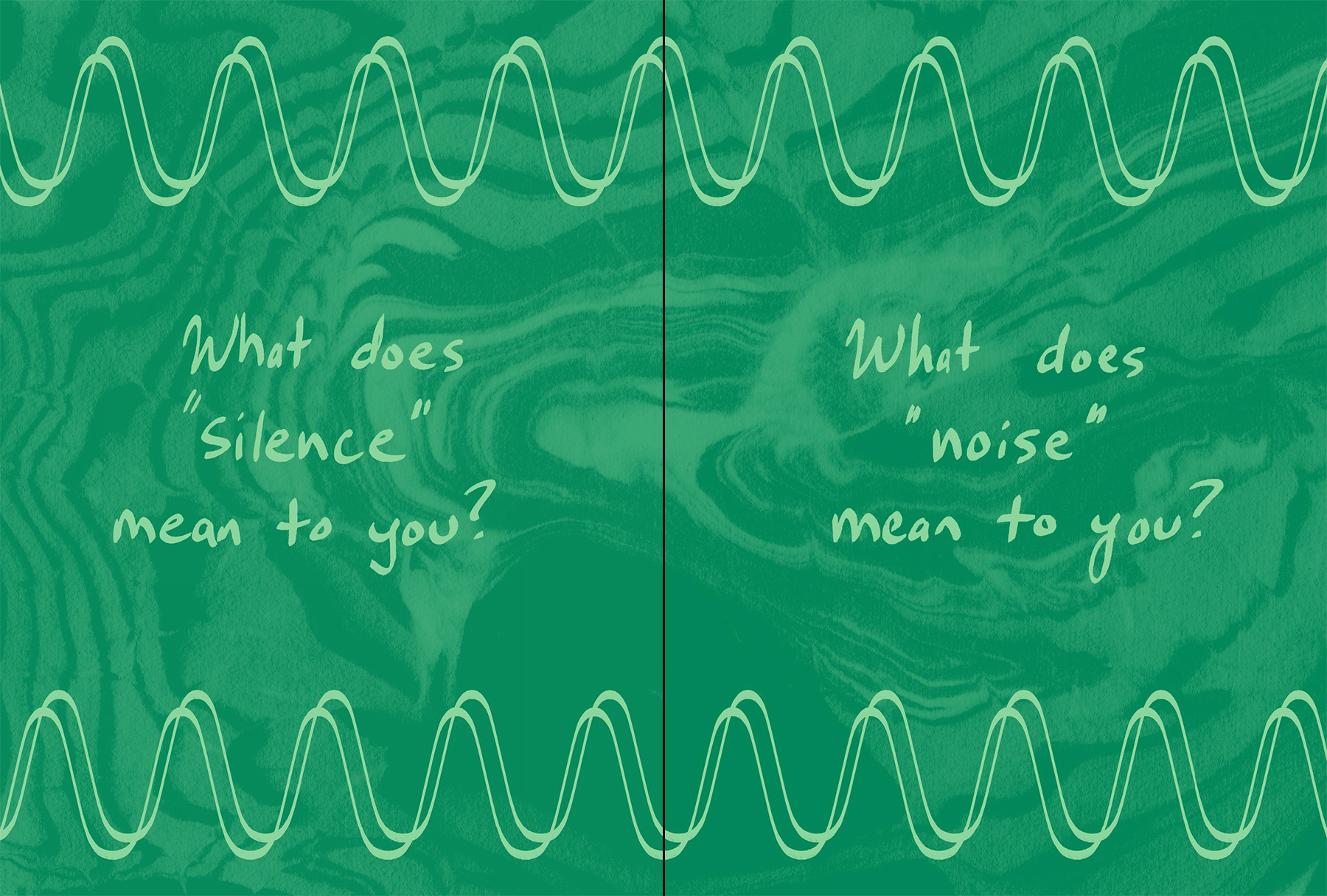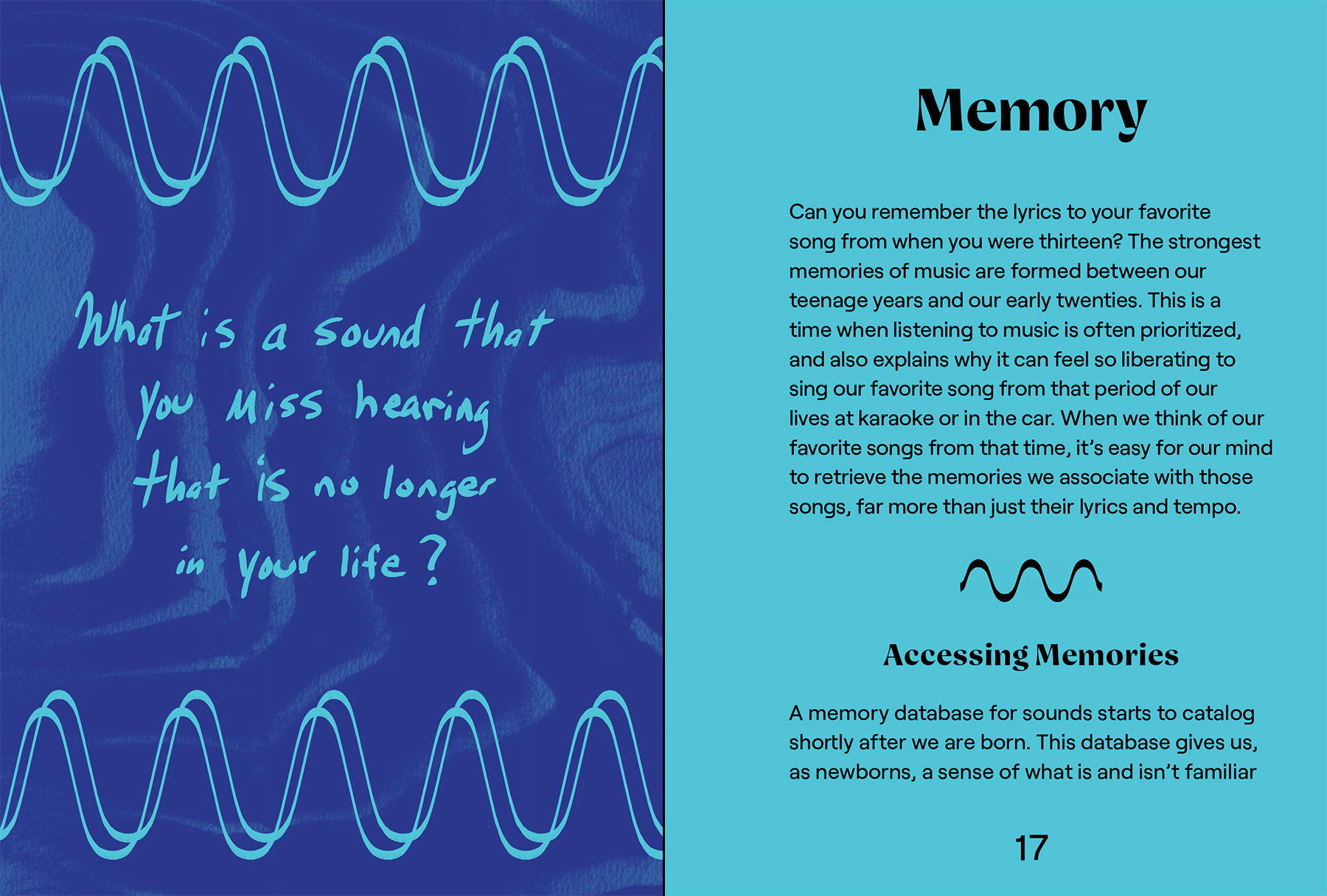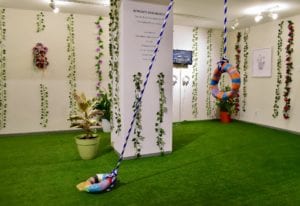In Her New Book, Lavender Suarez Teaches Us How To Boost Your Creativity Through Sound Healing.
Color and sound have a few things in common, but perhaps the biggest just so happens to be a scientific fact: they’re both generated by wavelengths.
To be more specific, we’re constantly surrounded by waves of various lengths. Light is composed of shorter wavelengths, and sound of larger, more resonant waves. Don’t even get us started on microwaves.
Long story short, these wavelengths are affecting us constantly, from the news we consume to the “silence” we think we’re enjoying when we settle into a warm bath at the end of the day. Even settling in for a casual, restorative sound bath is working on you in ways you wouldn’t even begin to imagine.
New Age therapies have been making quite a resurgence over the past few years, with otherwise “mainstream” folks turning to various healing modalities that, while backed by little clinical research, are just “science-y” enough to hook a sinker in us.
In her new book Transcendent Waves: How Listening Shapes Our Creative Lives published by Anthology, sound healing practitioner, meditation teacher and artist Lavender Suarez dives deep into the role sound plays in our everyday lives – and our creative processes. We had so many questions for her about sound, healing and creativity…

Art Zealous: Tell us about your background: how did you become interested in sound healing? What was your journey like?
Lavender Suarez: Since childhood I’ve had a keen ear for music and listening. I loved the feeling of being uplifted by a favorite song, or intrigued by the call of a distant bird. In college I studied psychology and art therapy. After college, I began studying meditation and found that sound healing was a natural progression of my interests in helping people, music, and meditation.
AZ: Do paintings and works of art have their own vibrational frequencies for us to listen to? How can we interact with the “sound” of visual art in a more meaningful way? What are some examples of art with “loud” frequencies and “soft” frequencies?
LS: Everyone’s connection to art and how it makes them feel is a highly personalized and delicate process. All objects have a natural vibration occurring which is often inaudible to us. A painting hanging in a gallery may seem silent, but one can consider the sounds surrounding how that work was made to further connect to it’s aural qualities.
In “Transcendent Waves,” I encourage creatives to consider the tools they use, and the sounds that surround them while they’re in the process of creating. Have you ever listened to the sound of your paint brush bristles while painting? What about the chiseling of a marble sculpture? To translate “loud” and “soft” to visual artworks is ultimately in the eye and ear of the beholder and how they connect with a creative work.

AZ: What inspired you to write Transcendent Waves? How can both artists and art lovers alike benefit from it?
LS: “Transcendent Waves” was inspired by my many years of teaching workshops about meditation and sound to people of all ages, particularly in creative contexts. I specialize in working with creative people to help them unlock their potential and get through blockages in my sound healing practice. I wanted to share some of that knowledge with the larger public.
Artists can benefit by approaching their work from an alternate angle they may have never considered as visual artists often don’t consider sound part of their practice. The book can help creative people recognize what sort of sonic environment they feel most creative in and how listening can connect them deeply to the world and people around them from which they can draw further inspiration.
It’s about removing preconceived notions that sound and listening should only be considerations for musicians and sound artists, listening can inspire creative people and art lovers alike in their practice and daily lives.
AZ: You discuss digital distractions in the book mostly by addressing the algorithms that monitor what we actually listen to and how that affects us under a capitalist system – what about visually and vibrationally? How can we listen to the patterns in what we visually consume in order to center or ground ourselves?
LS: A big part of our patterns in how we visually consume is in the scale we’re viewing our world at. By receiving most of our information via our cellphones (particularly right now), it actually creates more stress signals to our brain due to how our eyes have to focus to such a physically small point of view. This process also affects our breathing, which is at the center of our well-being.
Consider how you breathe when you’re absorbing art, news, and text-based communication on your phone as opposed to in a gallery, in a newspaper or on a telephone call. We may not be able to step away from our phones as much as we would like to, but being aware of how much time you’re utilizing it and how your body feels during that time is an important pattern to notice.
AZ: If you could isolate one exercise from Transcendent Waves you think every creative should practice, what would it be?
LS: I think it’s important for creative people to cultivate an understanding of what level of auditory stimulation (or lack there of…) that they need to feel creative. As mentioned in the book; some people work really well in bustling coffee shops while others need complete silence to focus.
By figuring out what degree of volume and types of sound (music, non-music) works best for you, can be incredibly beneficial for creative people to enter a “flow state” where they’re able to create freely and have a very positive experience that they can tap back into at any time.
AZ: For anyone interested in diving deeper into conscious listening and experiencing their own transcendence – what do you suggest they start listening to to attune themselves to the vibrations all around us? What’s something simple they can start with (after reading your book, of course) that will help them become acquainted with the transcendent capabilities of sound?
LS: The best place to start is by listening to your own body and where you spend most of your time. When I first started exploring meditation, I initially found silent meditation rather overwhelming. I didn’t know how to quiet my running mind.
Eventually rather than just “focusing on my breath,” ie: thinking about it, I started listening to my breath and slowly letting in the sounds of the room around me into that as well. It created a connection to myself, and the space I was in that I found to be very grounding and refreshing.
If you find your home too distracting, try going to a park, sitting down and closing your eyes for a moment to take in the sounds of nature fully and completely.
AZ: In a world filled with noise, how can we understand and engage with silence more meaningfully? How can that help us create or interact with art?
LS: Silence is a big topic in my book, because it’s so desirable, yet often very illusive at the same time. We often consider having a threshold for “noise,” but most of us have a threshold for silence as well. Silence can be a place of uncomfortability as well as relaxation, it has this dual nature that often goes ignored.
Similarly, in our creative practices, we have to be willing to risk going into uncomfortable territory sometimes such as trying new methods and experiencing new works. Meaningfully delving into silence can feel like a giant leap into the unknown, but it’s a blank canvas that can provide some of the greatest insights if you just have patience.
Transcendent Waves by Lavender Suarez is currently available for preorder through December 15th.
From November 17th to December 14th, all copies of Transcendent Waves pre-ordered directly through the web store will include a free download of an uplifting meditative sound bath audio recording by Suarez. The twelve-minute recording features hypnotic gong playing that slowly ascends into a lush synthesizer soundscape. The track also includes her reading selections from the “Sonic Inquiry” pages of the book—questions meant to provoke examination and inspiration in one’s relationship to sound and listening.

